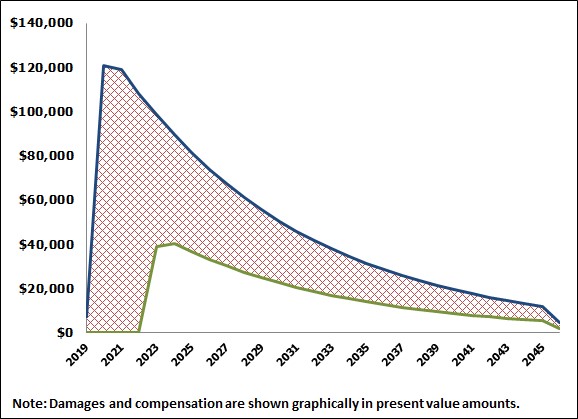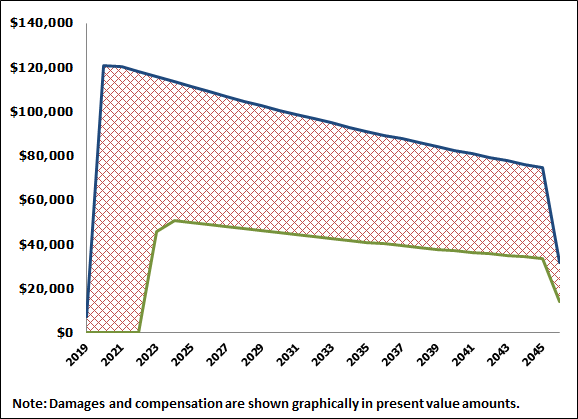Lost compensation is a common element of economic damages in personal injury, medical malpractice, wrongful termination, failure to promote and other similar torts. Economists or CPAs are generally engaged as independent damage experts to calculate lost compensation because of their unique skill set in addressing such losses. However, these experts are often employed only after settlement or other mediation efforts have failed. Without the insights such experts provide, counsel and clients are at a disadvantage during such discussions, whereby plaintiffs may leave money on the table, defendants may overpay, or efforts may be wasted further pursuing an unrealistic expectation when a settlement offer was reasonable.
Conceptually, lost compensation is what Plaintiff should have earned had the alleged incident not occurred (aka “but-for” compensation) less actual compensation (aka “mitigation”). Although the concept may be relatively simple to describe, the data inputs underlying the calculations vary significantly, as does the final result. Critical components of the calculations include (i) information specific to Plaintiff, (ii) various third-party credible statistics and studies, and (iii) market conditions, all of which must be distilled into a proper methodology for damage computation.
So why aren’t experts employed earlier to (i) provide counsel with the best information possible and (ii) demonstrate to the opposing party the defensibility of an offer? Many attorneys believe that a faster settlement without expending significant time or cost is the best approach. However, valuable guidance is available without substantial investment. An interactive settlement/mediation tool can (i) provide counsel with the information necessary to provide meaningful advice to the client about appropriate damage amounts, and (ii) assist with settlement/mediation discussions by demonstrating that damage amounts requested/offered are based on reasonable application of defined inputs, properly applied.
A proper and meaningful interactive model calculates lost compensation (lost earnings and lost benefits) based on Plaintiff specific inputs including demographics and historical earnings, combined with government statistics, economic studies, and market conditions. Economic factors considered include those generally accepted in lost earnings matters, such as:
- Future earnings and earnings growth
- Value of employment benefits
- Expected work life
- Present value discounts for future earnings
A model can also be customized to include fact patterns that are unique to a particular case. More complex assignments involving stock options or other more difficult to value compensation elements can be addressed with supplemental analysis.
Interactive features allow you to immediately see how various inputs affect the economic damage conclusion and can generate alternate scenarios. This facilitates preparation and assessment of settlement/mediation offers and acceptable ranges for negotiation. Some of the more common points of disagreement amongst opposing sides of a lost earnings case include the appropriate discount rate, future earnings, and future employment fringe benefits. All of these variables/inputs (among others) may be altered and presented in various combinations.
To provide an example, the following two damage calculations and accompanying graphics demonstrate the varying conclusions of an interactive model changing just one important input, the discount rate (see article regarding discount rates), while keeping all other inputs (e.g., Plaintiff’s demographic and earnings data, trial date, future employment benefits, etc.) static. Altering just the discount rate can have a material effect on the damages amount; in this case, approximately a $700,000 difference:
Summary of Economic Damages Using a 10% Discount Rate


Summary of Economic Damages using a 2% Discount Rate


Fulcrum Inquiry assists lawyers with economic damages associated with injury and employment matters, through both direct employment of experts and with our interactive settlement tool.
